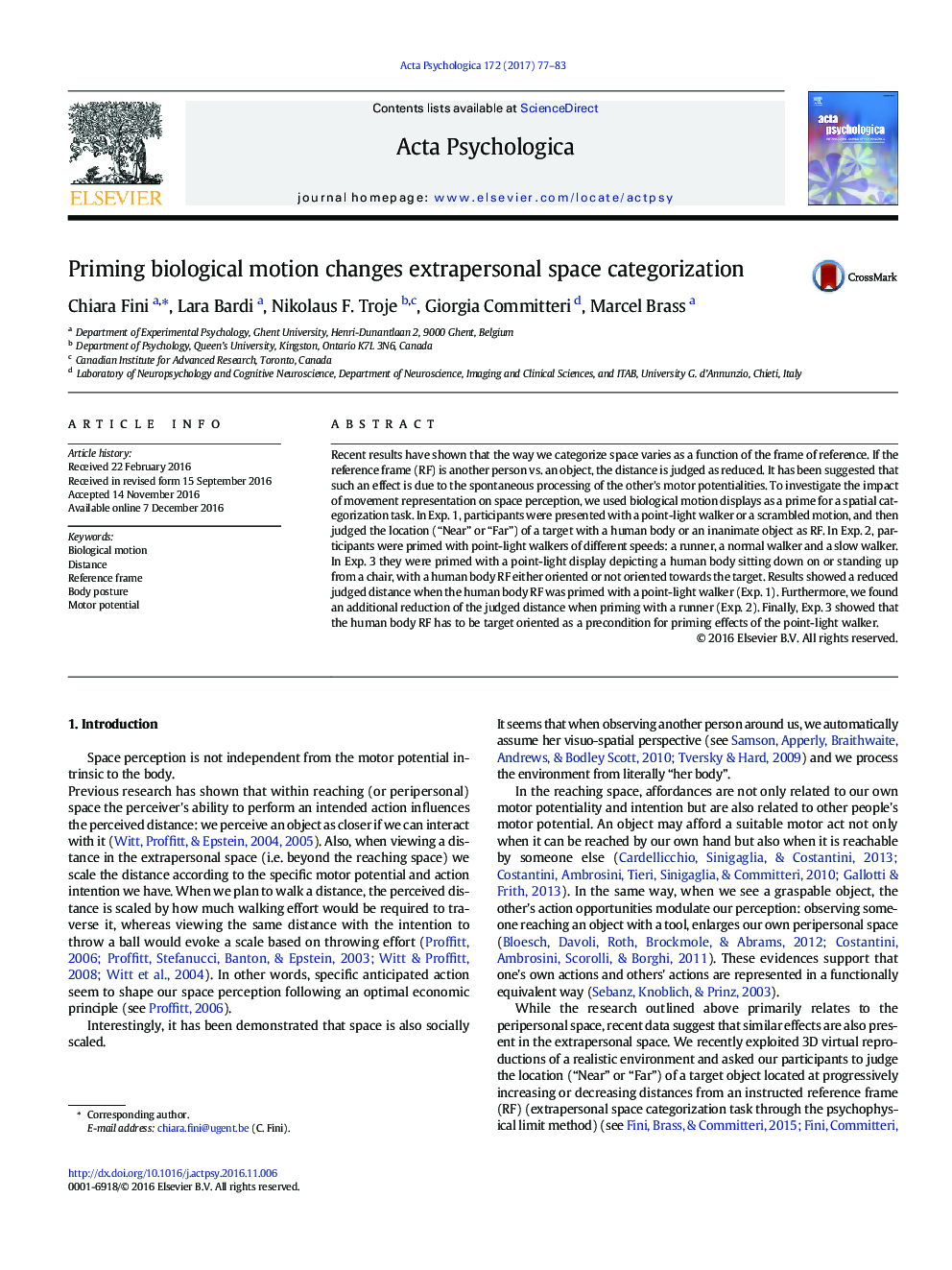| کد مقاله | کد نشریه | سال انتشار | مقاله انگلیسی | نسخه تمام متن |
|---|---|---|---|---|
| 5040257 | 1473586 | 2017 | 7 صفحه PDF | دانلود رایگان |
- Priming with a point-light walker vs a scrambled motion a human RF leads to categorize the distance as compressed.
Recent results have shown that the way we categorize space varies as a function of the frame of reference. If the reference frame (RF) is another person vs. an object, the distance is judged as reduced. It has been suggested that such an effect is due to the spontaneous processing of the other's motor potentialities. To investigate the impact of movement representation on space perception, we used biological motion displays as a prime for a spatial categorization task. In Exp. 1, participants were presented with a point-light walker or a scrambled motion, and then judged the location (“Near” or “Far”) of a target with a human body or an inanimate object as RF. In Exp. 2, participants were primed with point-light walkers of different speeds: a runner, a normal walker and a slow walker. In Exp. 3 they were primed with a point-light display depicting a human body sitting down on or standing up from a chair, with a human body RF either oriented or not oriented towards the target. Results showed a reduced judged distance when the human body RF was primed with a point-light walker (Exp. 1). Furthermore, we found an additional reduction of the judged distance when priming with a runner (Exp. 2). Finally, Exp. 3 showed that the human body RF has to be target oriented as a precondition for priming effects of the point-light walker.
Journal: Acta Psychologica - Volume 172, January 2017, Pages 77-83
